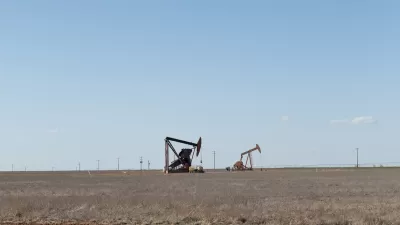The Well Done Foundation and U.S. Fish and Wildlife Service are partnering to plug over 110 orphan wells across four National Wildlife Refuges, restoring habitats, protecting ecosystems, and reducing methane emissions.

The Well Done Foundation (WDF), a national nonprofit dedicated to addressing orphaned oil and gas wells, has partnered with the U.S. Fish and Wildlife Service (USFWS) to restore critical habitats across four National Wildlife Refuges. Backed by a $19.2 million grant, this initiative will target over 110 orphan wells in refuges including Deep Fork and Sequoyah in Oklahoma, Hailstone in Montana, and Baskett Slough in Oregon. These efforts will protect visitors, subsurface and surface waters, wetlands, and sensitive ecosystems, highlighting a groundbreaking commitment to both environmental conservation and public safety.
WDF plans to conduct comprehensive surveys, implement erosion and spill controls, and perform methane and water quality testing before and after plugging wells. Additional activities include soil remediation, site restoration, and annual post-plug monitoring. This collaborative effort also aims to address broader environmental challenges by building partnerships with nonprofits, tribes, and educational institutions for training, workforce development, and volunteer programs, enhancing both public engagement and land stewardship.
The project continues WDF’s proven track record, with the organization plugging over 46 high-priority wells since 2019 and eliminating more than 1.5 million metric tons of methane emissions. By restoring these refuge lands, the collaboration reinforces the balance between natural ecosystems and human development, ensuring safer, healthier habitats for wildlife and visitors alike.

Manufactured Crisis: Losing the Nation’s Largest Source of Unsubsidized Affordable Housing
Manufactured housing communities have long been an affordable housing option for millions of people living in the U.S., but that affordability is disappearing rapidly. How did we get here?

Americans May Be Stuck — But Why?
Americans are moving a lot less than they once did, and that is a problem. While Yoni Applebaum, in his highly-publicized article Stuck, gets the reasons badly wrong, it's still important to ask: why are we moving so much less than before?

Using Old Oil and Gas Wells for Green Energy Storage
Penn State researchers have found that repurposing abandoned oil and gas wells for geothermal-assisted compressed-air energy storage can boost efficiency, reduce environmental risks, and support clean energy and job transitions.

Updating LA’s Tree Rules Could Bring More Shade to Underserved Neighborhoods
A new USC study finds that relaxing Los Angeles’ outdated tree planting guidelines could significantly expand urban tree canopy and reduce shade disparities in lower-income neighborhoods, though infrastructure investments are also needed.

California's Canal Solar Projects Aim to Conserve Resources and Expand Clean Energy
California’s Project Nexus has begun generating electricity from solar panels installed over irrigation canals, with researchers and state agencies exploring statewide expansion to conserve water and boost clean energy production.

HHS Staff Cuts Gut Energy Assistance Program
The full staff of a federal program that distributes heating and cooling assistance for low-income families was laid off, jeopardizing the program’s operations.
Urban Design for Planners 1: Software Tools
This six-course series explores essential urban design concepts using open source software and equips planners with the tools they need to participate fully in the urban design process.
Planning for Universal Design
Learn the tools for implementing Universal Design in planning regulations.
Heyer Gruel & Associates PA
City of Moreno Valley
Institute for Housing and Urban Development Studies (IHS)
City of Grandview
Harvard GSD Executive Education
Salt Lake City
NYU Wagner Graduate School of Public Service
City of Cambridge, Maryland




























